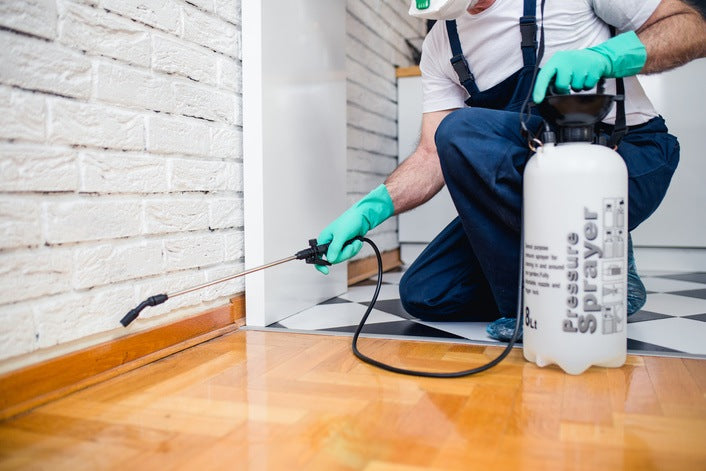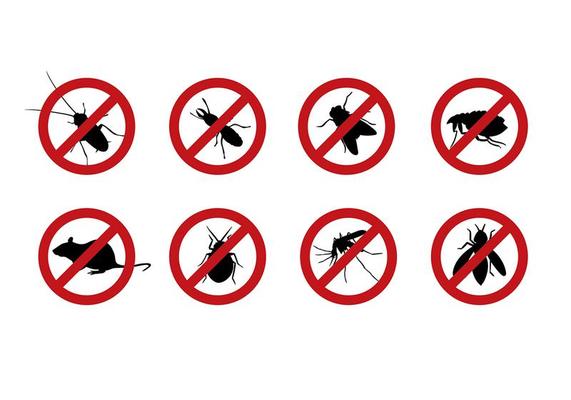Trusted Solutions for Rodents and Bugs from Pest Control Lockhart
Trusted Solutions for Rodents and Bugs from Pest Control Lockhart
Blog Article
Exploring Problem and Treatment Methods on the planet of Insect Control
The landscape of pest control incorporates a myriad of challenges, particularly as invasions of typical household pests remain to advance. Understanding the actions and reproductive patterns of these problems is essential for establishing effective therapy methods. By incorporating preventative measures with sophisticated monitoring techniques, such as Integrated Insect Monitoring (IPM), homeowners can much better protect their environments. Nonetheless, the efficiency of these approaches may differ considerably based upon certain situations. What hidden factors add to the success or failing of these techniques in various setups?

Common House Pests
When it concerns handling our space, understanding typical house parasites is essential. These pests not only disrupt our convenience yet can likewise present health threats and damages property. The most common household bugs include ants, roaches, rodents, termites, and bed pests.
Ants, often seen foraging in kitchen areas, can infect food and develop large swarms. Rodents, including mice and rats, can create structural damage and lug illness like hantavirus and salmonella.
Identifying the indications of these pests, such as droppings, nests, or bite marks, is vital for early intervention (Pest Control Lockhart). Appropriate cleanliness techniques, securing entry factors, and keeping a clutter-free setting work preventative actions. By recognizing these common household bugs and comprehending their behaviors, house owners can take aggressive actions to mitigate invasions, making certain a much healthier living atmosphere
Understanding Bug Infestations
Insect invasions can intensify quickly, turning a minor annoyance into a considerable trouble if not attended to without delay. Typical aspects contributing to problems include poor cleanliness, architectural susceptabilities, and seasonal modifications that drive pests inside.
Identifying the kind of pest is crucial, as different varieties show diverse behaviors and reproductive prices. For example, rodents may establish nests in surprise locations while insects like roaches flourish in moist settings. Early discovery typically depends upon recognizing signs such as droppings, chomp marks, or uncommon noises, which can suggest an issue prior to it ends up being severe.
Warm, damp climates can help with the fast growth of pest populaces, while modifications in landscape design or building and construction can inadvertently create favorable atmospheres. An enlightened approach to understanding these characteristics lays the groundwork for effective parasite monitoring methods in the future.
Treatment Techniques and Strategies
Efficient therapy methods and techniques are essential for reducing parasite invasions and bring back a safe setting. A multifaceted strategy is often best, incorporating chemical, organic, and mechanical methods tailored to the particular parasite and the seriousness of the infestation.
Chemical therapies consist of using pesticides and herbicides, which can efficiently remove parasites. Proper application and adherence to safety standards are important to minimize threats to people and non-target microorganisms. Integrated Insect Administration (IPM) urges the wise use of chemicals as a last option, relying instead on surveillance and threshold levels to figure out intervention demands.
Organic control methods entail presenting all-natural killers or parasites to reduce insect populaces. This strategy is progressively popular, especially in farming setups, as it advertises ecological sustainability.
Mechanical approaches, such as traps and barriers, offer immediate relief from insects without introducing chemicals. Options consist of sticky traps for insects or physical obstacles for rats.
Ultimately, the choice of therapy method must take into consideration the details pest, the setting, and prospective effect on human health and wellness and ecosystems. A balanced combination of these strategies can properly handle problems while advertising lasting parasite control services.
Preventive Procedures for House
Proactively resolving parasite issues before they rise is crucial for preserving a healthy and balanced home environment (Pest Control Lockhart). Implementing reliable safety nets can substantially reduce the likelihood of invasions, inevitably guarding both your property and well-being

Proper landscape design also plays a crucial role in prevention. Keeping bushes and trees trimmed away from your home lowers the chances of insects discovering their means indoors. Furthermore, make sure that water drainage systems are functioning efficiently to stop standing water, which can reel in mosquitoes and various other insects.
Last but not least, regular inspections are advisable. On a regular basis inspecting for signs of bug activity enables very early intervention. By embracing these preventive actions, homeowners can produce an atmosphere that is less congenial to parasites, thereby enhancing their total lifestyle and reducing the need for substantial parasite control treatments.
Industrial Insect Control Techniques
A comprehensive technique to business pest control is necessary for organizations intending to preserve a risk-free and hygienic atmosphere. Efficient methods include a mix of routine examinations, worker training, and the application of Integrated Pest Management (IPM) practices.
Routine inspections make it possible for early detection of parasite activity, enabling prompt Going Here intervention. Businesses need to develop a regular timetable for these analyses, concentrating on high-risk areas such as kitchen areas, storeroom, and garbage disposal websites. Employee training is equally crucial; personnel must be informed on the indicators of insect problems and the value of reporting them quickly.
Executing IPM practices assists mitigate parasite problems sustainably. This consists of environment adjustment, such as securing entry factors and minimizing mess, in addition to employing all-natural deterrents prior to resorting to chemical therapies.

Furthermore, working together with a qualified parasite control supplier guarantees additional resources access to professional knowledge and sophisticated therapy alternatives. This partnership can result in customized bug control prepares customized to the certain needs of business, minimizing dangers and improving general efficacy. Inevitably, a proactive and informed technique promotes a pest-free environment, safeguarding both public wellness and company credibility.
Final Thought
In final thought, reliable parasite control necessitates a comprehensive understanding of typical family parasites and their behaviors, combined with targeted therapy approaches. Executing preventive measures together with treatment techniques imp source such as Integrated Pest Monitoring and organic control enhances the capacity to alleviate infestations.
Report this page